Product
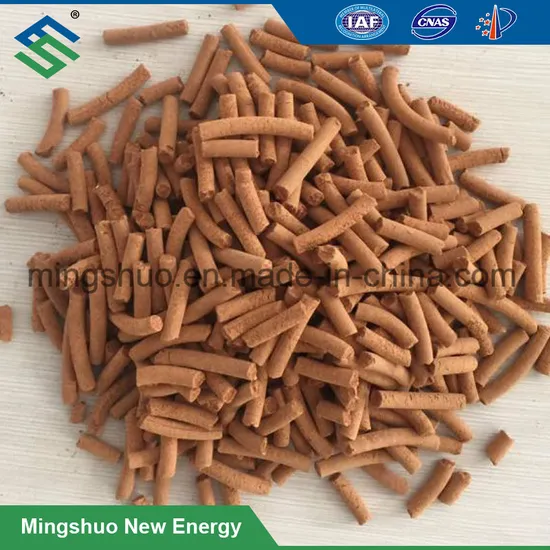
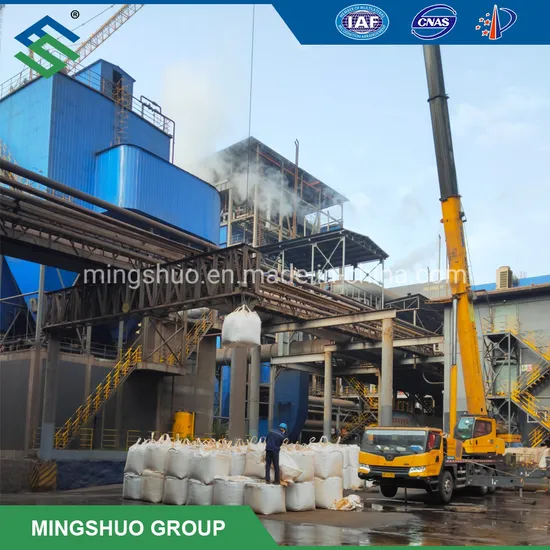
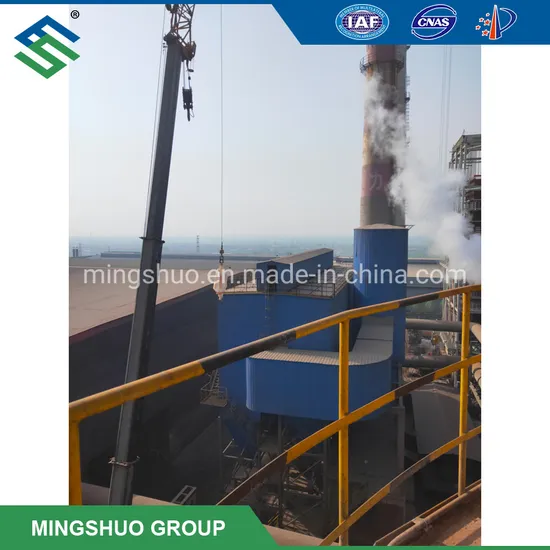
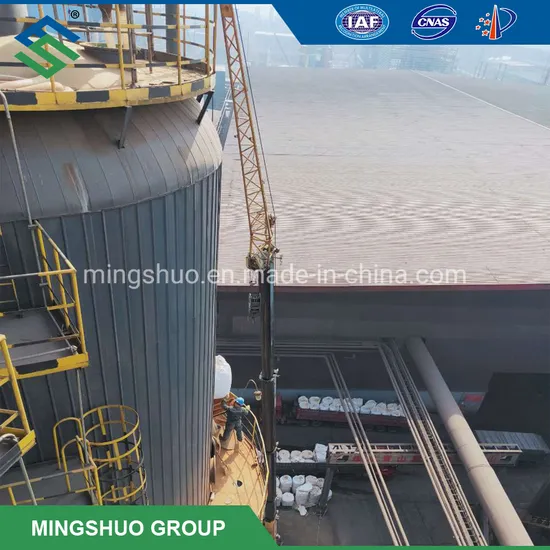
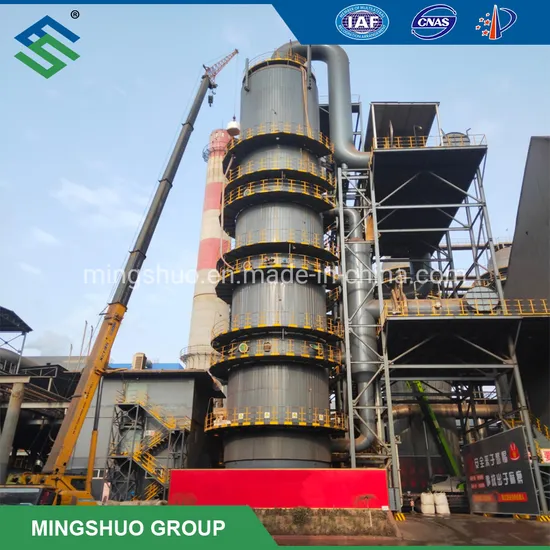

Preview
Basic Info.Product DescriptionCertifications
Basic Info.
| Model NO. | MT Series Ferric Oxide Desulfurizer |
| Formula | Feooh |
| Source | Particle |
| Structure Feature | Pellets |
| Disposal | Landfill |
| Gas Application | Blast Furnace Gas, etc |
| Active Component | Ferric/Iron Oxide/ Hydroxide |
| Vessel | Fixed Bed |
| Type | Structured Packing |
| Usage | Chemical Engineering |
| Material | Chemical |
| Effect | H2s Removal From Gases |
| Transport Package | Standard Export Packing |
| Specification | 800kgs/bag or 40kgs/bag |
| Trademark | Mingshuo |
| Origin | China |
| HS Code | 28211000 |
| Production Capacity | 100, 000tons/Year |
Product Description
Blast furnace gas fine desulfurization
Blast furnace gas
Blast furnace gas is a by-product produced in the ironmaking process, and its main components are carbon monoxide, carbon dioxide, nitrogen, hydrogen, methane, etc. In addition to the above components, blast furnace gas also contains a certain amount of sulfides. The main component of sulfur in blast furnace gas is organic thiocarbonyl sulfide COS, which contains trace CS2 and a small amount of inorganic sulfur H2S.
Product Parameters
Characteristics & application
1. Blast furnace gas has a large gas volume, high organic sulfur content, and a large amount of water vapor.2. The main forms of sulfur in blast furnace gas are COS and H2S, of which COS accounts for about 70%, H2S accounts for about 30%, and the total sulfur content is about 180 mg/m3.3. Blast furnace gas has many non-combustible components, less combustible components (about 30%), and low calorific value, generally 3344-4180 kJ/Nm3.4. Blast furnace gas is a colorless, odorless, and odorless gas that is extremely toxic due to its high CO content.Desulfurizer's replacement for a 400,000 Nm3/h
blast furnace gas desulfurization projectApplication of blast furnace gas in iron and steel plants:
Blast furnace gas can be used as heating fuel for iron and steel plants, and can also be used for other purposes such as power generation. Making good use of this part of by-product energy can not only reduce the energy consumption of enterprises but also improve the pollution of iron and steel enterprises to the surrounding environment.
Desulfurization
According to the composition of blast furnace gas, the composition of flue gas after gas combustion is calculated. SO2 should reach the ultra-low emission standard of 35 mg/m3, and the total sulfur in blast furnace gas should be controlled below 20 mg/m3.
Process description
There are two forms of sulfur in blast furnace gas: organic sulfur (COS mainly) and inorganic sulfur (H2S), both of which will be converted into sulfur dioxide (SO2) after combustion.Process technology: organic sulfur hydrolysis + iron oxide dry desulfurization
The organic sulfur conversion device is set up under the conditions of relatively high gas pressure and temperature before the power generation device, and the organic sulfur in the blast furnace gas is first converted into hydrogen sulfide (H2S), and the converted hydrogen sulfide (H2S) is removed by iron oxide dry desulfurization process.The blast furnace gas takes advantage of the favorable conditions of relatively high pressure and temperature (temperature 100-180ºC, pressure about 200kpa), and sets up a targeted pretreatment device for blast furnace gas to remove dust, oil, heavy metals, inorganic chlorine, and other impurities in the gas.After that, an organic sulfur conversion device is set up, and the water vapor in the blast furnace gas is used for the conversion reaction of the organic sulfur to generate hydrogen sulfide (H2S) to complete the conversion of the organic sulfur, and then the blast furnace gas goes to the residual pressure power generation device (TRT).After the blast furnace gas is cooled and decompressed by TRT, the temperature is about 40-80ºC, and the pressure is about 10-20kpa. At this time, a dry fine desulfurization device is set up to remove hydrogen sulfide (H2S) in the gas, and the outlet is below 10mg/Nm3 to ensure that the sulfur dioxide (SO2) in the exhaust gas after the blast furnace gas is burned up to the standard discharge.
Process advantages
Short process route, simple operation, small investment, no waste water.
Reaction principle
1. The principle of organosulfur catalytic hydrolysis:
COS + H2O = H2S + H2O
CS2 + 2 H2O = 2 H2S + CO2
2. The process of iron oxide absorbing hydrogen sulfide
Fe203.H2O + 3 H2S = Fe2S3.H2O + 3 H2O (1)
Fe2O3.H2O + 3 H2S = 2 FeS + S + 4 H2O
(2)
Blast furnace gas
Blast furnace gas is a by-product produced in the ironmaking process, and its main components are carbon monoxide, carbon dioxide, nitrogen, hydrogen, methane, etc. In addition to the above components, blast furnace gas also contains a certain amount of sulfides. The main component of sulfur in blast furnace gas is organic thiocarbonyl sulfide COS, which contains trace CS2 and a small amount of inorganic sulfur H2S.
Product Parameters
Characteristics & application
1. Blast furnace gas has a large gas volume, high organic sulfur content, and a large amount of water vapor.2. The main forms of sulfur in blast furnace gas are COS and H2S, of which COS accounts for about 70%, H2S accounts for about 30%, and the total sulfur content is about 180 mg/m3.3. Blast furnace gas has many non-combustible components, less combustible components (about 30%), and low calorific value, generally 3344-4180 kJ/Nm3.4. Blast furnace gas is a colorless, odorless, and odorless gas that is extremely toxic due to its high CO content.Desulfurizer's replacement for a 400,000 Nm3/h
blast furnace gas desulfurization projectApplication of blast furnace gas in iron and steel plants:
Blast furnace gas can be used as heating fuel for iron and steel plants, and can also be used for other purposes such as power generation. Making good use of this part of by-product energy can not only reduce the energy consumption of enterprises but also improve the pollution of iron and steel enterprises to the surrounding environment.
Desulfurization
According to the composition of blast furnace gas, the composition of flue gas after gas combustion is calculated. SO2 should reach the ultra-low emission standard of 35 mg/m3, and the total sulfur in blast furnace gas should be controlled below 20 mg/m3.
Process description
There are two forms of sulfur in blast furnace gas: organic sulfur (COS mainly) and inorganic sulfur (H2S), both of which will be converted into sulfur dioxide (SO2) after combustion.Process technology: organic sulfur hydrolysis + iron oxide dry desulfurization
The organic sulfur conversion device is set up under the conditions of relatively high gas pressure and temperature before the power generation device, and the organic sulfur in the blast furnace gas is first converted into hydrogen sulfide (H2S), and the converted hydrogen sulfide (H2S) is removed by iron oxide dry desulfurization process.The blast furnace gas takes advantage of the favorable conditions of relatively high pressure and temperature (temperature 100-180ºC, pressure about 200kpa), and sets up a targeted pretreatment device for blast furnace gas to remove dust, oil, heavy metals, inorganic chlorine, and other impurities in the gas.After that, an organic sulfur conversion device is set up, and the water vapor in the blast furnace gas is used for the conversion reaction of the organic sulfur to generate hydrogen sulfide (H2S) to complete the conversion of the organic sulfur, and then the blast furnace gas goes to the residual pressure power generation device (TRT).After the blast furnace gas is cooled and decompressed by TRT, the temperature is about 40-80ºC, and the pressure is about 10-20kpa. At this time, a dry fine desulfurization device is set up to remove hydrogen sulfide (H2S) in the gas, and the outlet is below 10mg/Nm3 to ensure that the sulfur dioxide (SO2) in the exhaust gas after the blast furnace gas is burned up to the standard discharge.
Process advantages
Short process route, simple operation, small investment, no waste water.
Reaction principle
1. The principle of organosulfur catalytic hydrolysis:
COS + H2O = H2S + H2O
CS2 + 2 H2O = 2 H2S + CO2
2. The process of iron oxide absorbing hydrogen sulfide
Fe203.H2O + 3 H2S = Fe2S3.H2O + 3 H2O (1)
Fe2O3.H2O + 3 H2S = 2 FeS + S + 4 H2O
(2)
Preview
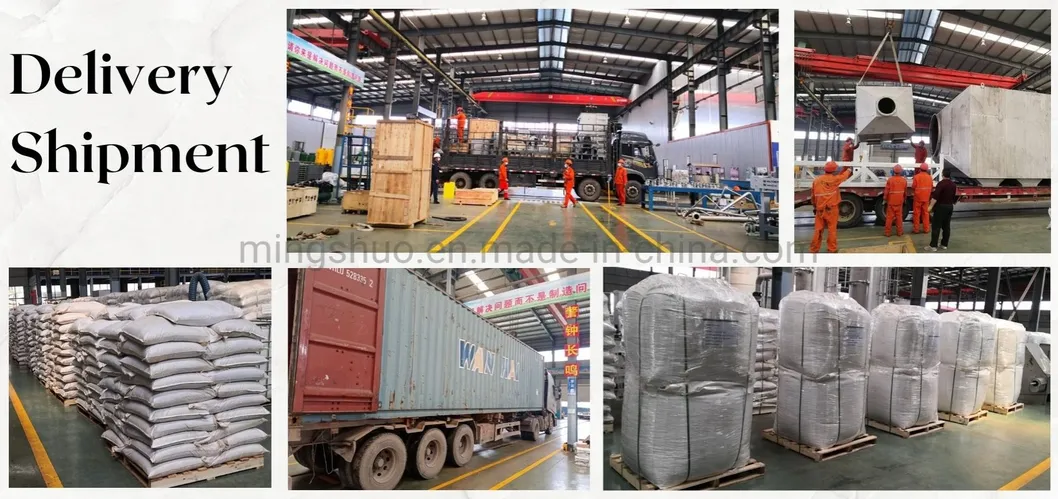
Preview

Preview
Operation conditions and notes
Preview
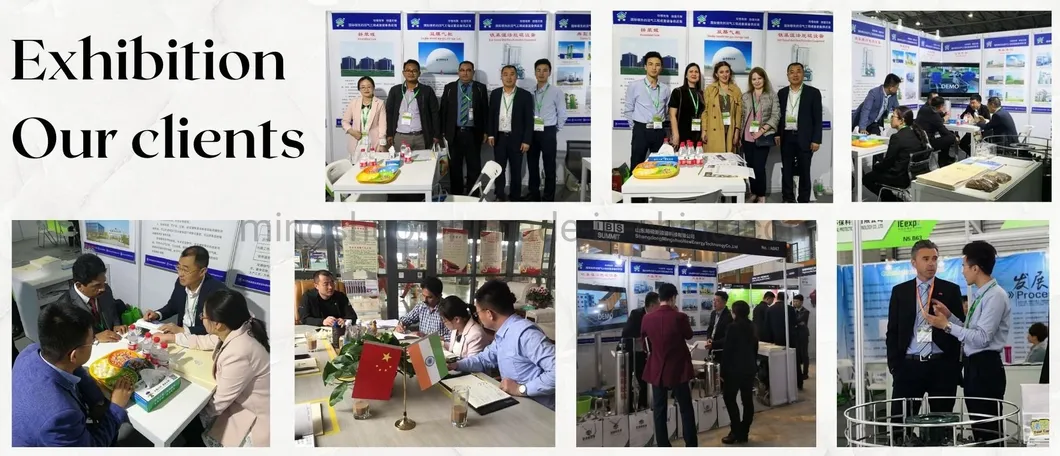
Preview
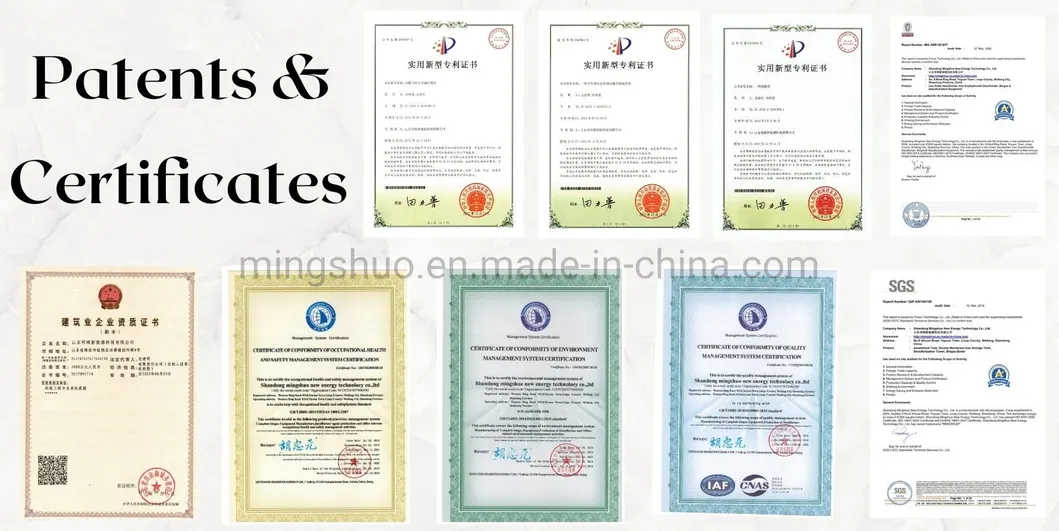
Preview
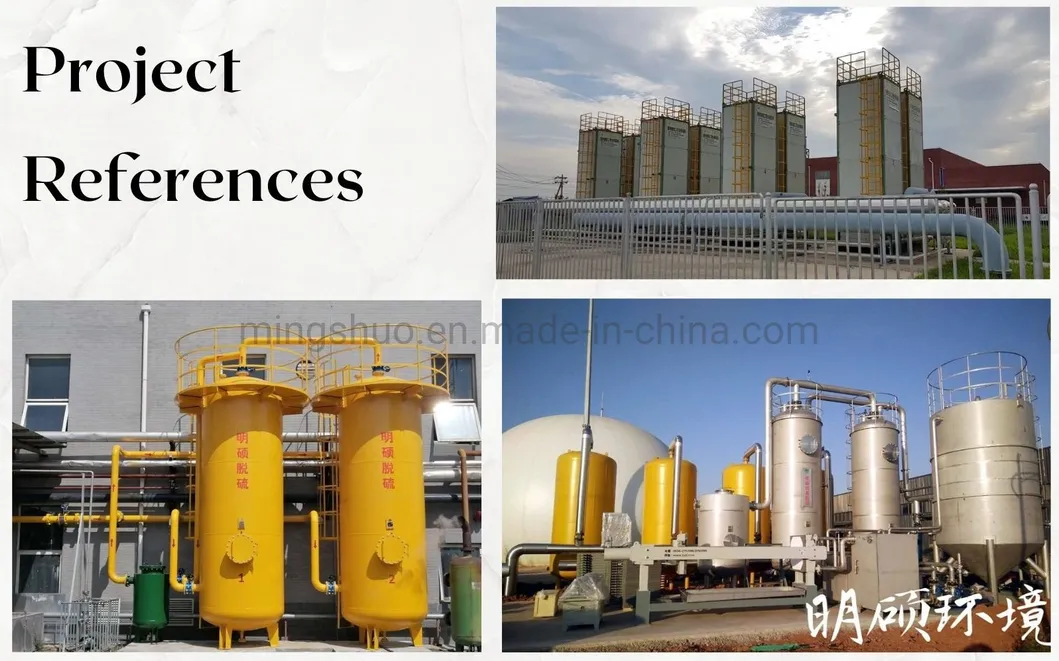
Preview
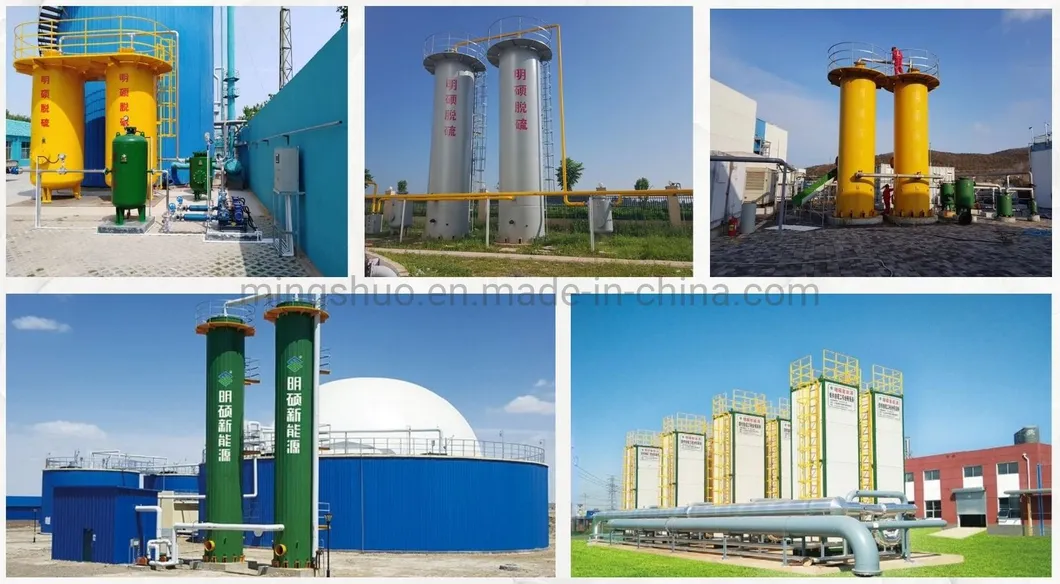
Preview
Contact: Emma Luan
Phone: +86 176 6023 9752Manufacturer &
Supplier for Biogas Plant, Desulfurization System, Organic Waste Treatment Equipment etc.
Phone: +86 176 6023 9752Manufacturer &
Supplier for Biogas Plant, Desulfurization System, Organic Waste Treatment Equipment etc.
Preview
Certifications
Name:营业执照

Preview
Blast Furnace Gas Hydrogen Sulfide Adsorbent for Steel Mill
$310 ~ $1675.37
Chemical industry chain · fill in · Biological Filling
Model NO.:MT Series Ferric Oxide Desulfurizer
Transport Package:Standard Export Packing
Origin:China
 Shanghai
Shanghai  Authenticated
Authenticated50-99 EmployeesInformation Services and IT



